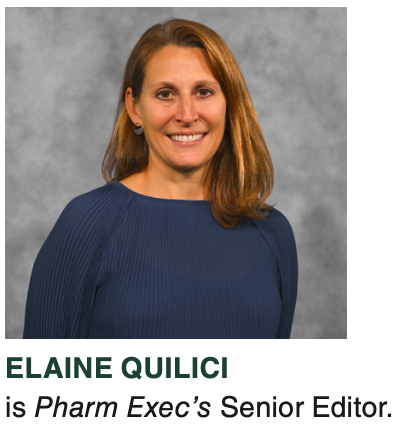- Sustainability
- DE&I
- Pandemic
- Finance
- Legal
- Technology
- Regulatory
- Global
- Pricing
- Strategy
- R&D/Clinical Trials
- Opinion
- Executive Roundtable
- Sales & Marketing
- Executive Profiles
- Leadership
- Market Access
- Patient Engagement
- Supply Chain
- Industry Trends
Looking Back at Our Leadership Lessons From the Past Year
It’s time to see how you’re doing with putting words into action.

Over the past year, this column has focused on a variety of leadership topics meant to inform and inspire change. As 2022 approaches, I’d like to underscore their effects on the success of an organization and offer a chance to evaluate their importance in your company.
Dealing with digital
In January, I focused on educating employees in the new technology pharma was forced to adopt as a result of COVID-19. The importance of investing in reskilling and upskilling one’s workforce was stressed. A report from GlobalData identified a lack of specific skills and talents as the main obstacle in pharma’s digital transformation.
I reinforced the topic of managing new digital initiatives in October, as I looked at artificial intelligence’s impact on leadership and how leaders need to adapt. “Insights are now coming in as campaigns are happening,” said Jeff French, vice president and chief digital officer at ViiV Healthcare. “That means as a decision maker, you have to respond much more quickly to make the call to say stop this, start over, redo this capability, etc.”
Enhancing soft skills
In February, Six Seconds CEO Josh Freedman said that feelings are data which need to be part of a leader’s dashboard. He added that emotional intelligence requires culture-shaping and systemic integration.
Similarly, burnout requires systemic change. “Companies must shift mindsets, policies, and practices to put employees first,” said Chris Cozic, senior vice president, global human resources at Genmab, in August. “It starts with employee listening...Then you must show up with action to ensure you have a workforce that is inspired, energized, and ready to innovate.”
These skills remain tantamount as employees transition back to the office. When leading in a post-quarantine world (June issue), Tiago Reis Marques, MD, PhD, CEO of Pasithea Therapeutics commented, “Executives will need to be emotionally closer to their employees...It is time for leaders to prioritize the mental well-being of their employees.”
Bringing people together
The need to work cross-functionally and incorporate diverse perspectives was discussed in March as a better way to solve problems. To quote Victor Bulto, president of Novartis Pharmaceuticals Corporation: “The answer to most of our complex challenges lies at the intersection of different areas of knowledge.”
Leaders should also try to bridge generation gaps. In May, I compared Boomers, Gen Xers, Millennials, and Gen Zers. “Finding commonalities and determining how to bring people together on them is one way that we can double down,” said Juli Blanche, VP of talent strategy and talent acquisition at Bristol Myers Squibb.
Whenever you’re dealing with disparate groups, it’s important to use clear, two-way communication—providing and eliciting feedback (April issue). According to LeadersEdge, feedback boosts employee engagement, makes employees more motivated, makes career development possible, and helps leaders lead better.
Tapping into talent
In September, I concentrated on pharma’s staffing issues and how that could impact innovation and diversity. “Great people are more in demand than ever before, and the costs of making a mistake in hiring are bigger than ever before,” said Nick Stephens, executive chairman of the search firm The RSA Group.
Building relationships with potential candidates via a talent pipeline (November issue) can help to onboard ideal employees. “Employers that wait to develop a robust pipeline for future needs may struggle to fill critical talent gaps in a timely way,” said Carl Segerstrom, senior vice president and chief talent officer at Merck.
Another way to foster talent is stepping back so others can step up (July issue). “If you get others to understand where you want to go and why it is important, then you can use their energy to multiply that vision,” said Paulo Fontoura, senior vice president and global head of neuroscience, ophthalmology, immunology, rare and infectious diseases clinical development at Roche/Genentech.
Hopefully, you’ve learned something new about leadership in this column over the past year. Now’s the time to implement the change you want to see.
Elaine Quilici is a Senior Editor for Pharm Exec. She can be reached at equilici@mjhlifesciences.com.

